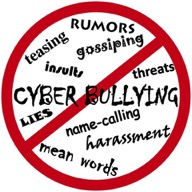For one of our homework assignments, we were asked to compare two companies with similar products and see how they set up their website. Below are my findings...
 VS.
VS. 
Verbal
Southwest:
- “Points take you places” clear verbal signal on what they want you to do
- BOOK is clearly stated by the table to lead you to book a flight
- “Your next trip starts now” clearly edging the viewer on to book a flight
Structural
Southwest:
- Vibrant colors with numbers created from photos draw the viewer into their promotional credit card.
- This is the first thing viewers see
- Top of page is clearly defined by what they offer: flight, hotel, car, and vacations; special offers; rapid rewards
- The structure for booking flights is clearly defined with boxes and large font
United:
- The first thing the viewer sees is a table with flight booking info and check in info. It is located in the left-hand corner, simple viewing as people read left to right.
Visual
Southwest:
- All tables/sections are clearly labeled in large white font
- Opening page is vibrant with an array of colors, clearly leading the viewer through each section
United:
- Main page has changing background photos to showcase different destinations and travelers
- Font is upper, lowercased for easy reading and not too aggressive.
- Changing background does not interfere visually with the booking table
- Background colors change with each section

